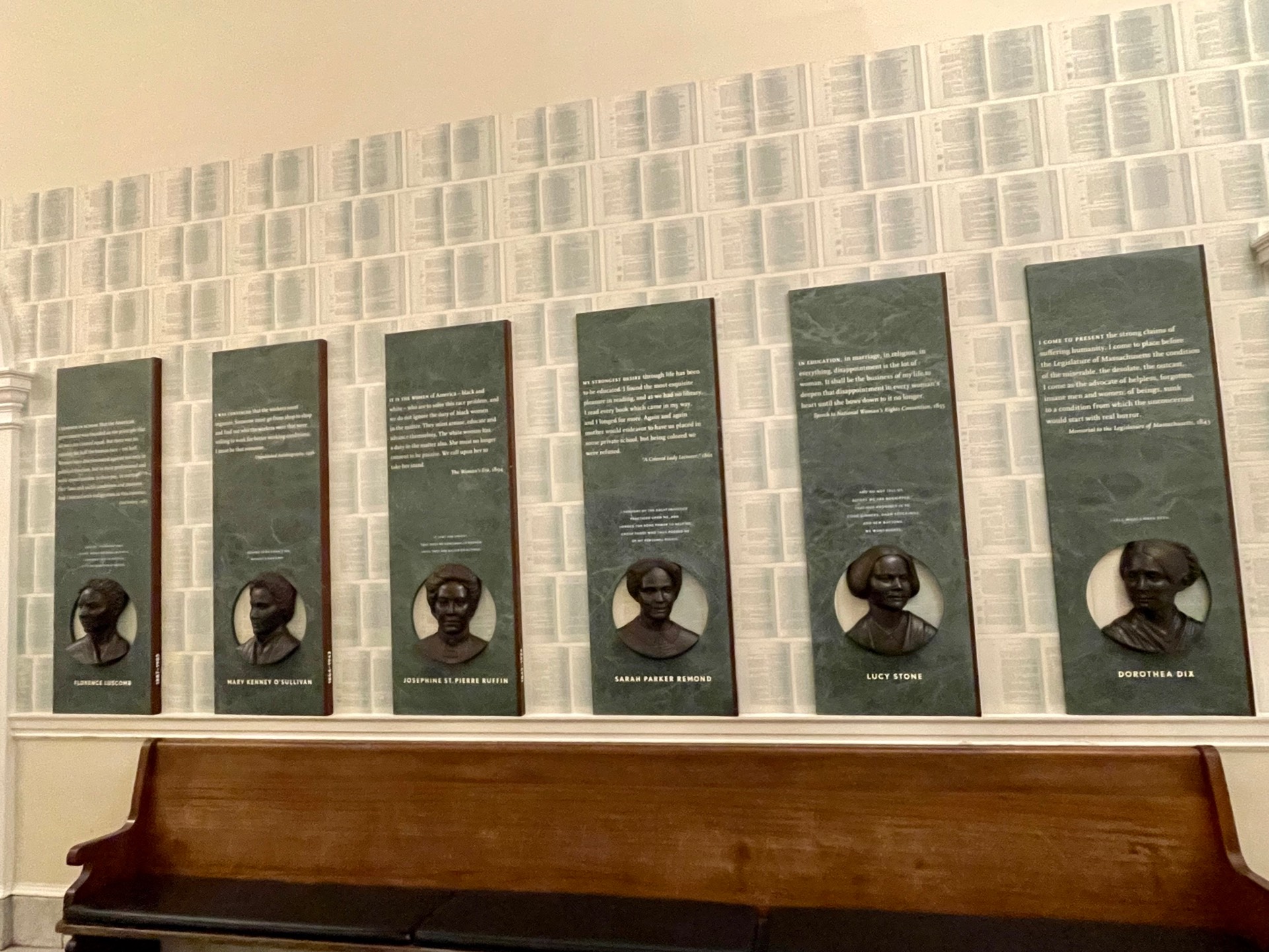
Audio Transcript
Stop 14. Women's Memorial. This is the Women's Memorial, which honors six women who fought for social and civil rights in the state and country. It was put here in 1999 by what was then the front entrance after September 11th, 2001. The main entrance was moved to the downstairs hooker entrance and to the Ashburn entrance on the right side of the building.
But this memorial still honors these important women. On the left is Dorothea Dix, who was the superintendent of all nurses during the Civil War. She is best known for fighting for the rights of the mentally ill who were housed in poor conditions, in prisons and poor houses. Dorothea wrote a report detailing the inhumane treatment of the mentally ill and traveled to the three states in the country campaigning for laws to improve their treatment.
Eventually getting laws passed in 32 of those states. Next to her is Lucy Stone, an early feminist and popular lecturer who spoke out against slavery and for women's rights. Next to her is Sarah Parker Richmond, a black abolitionist and lecturer who called for an end to slavery. She traveled to England in 1858 to promote the abolitionist cause there.
And after the Civil War, she became a doctor in Italy at the age of 42. Next to her is Josephine Saint-Pierre Ruffin, another abolitionist who helped recruit soldiers for the 54th and 55th Massachusetts regiments. She also founded the newspaper Women's Era, which urged its readers to fight for the rights of African-Americans and women. Next to her is Mary Kenney O'Sullivan, a labor organizer who founded the National Women's Trade Union League and worked for better conditions and pay for workers.
Finally, Florence Laska, who was born the year Dorothea Dix, died. She fought for women's rights to vote and sort passed in 1920, while also campaigning for public office several times during her life. These women all made contributions to expanding civil rights through the legislative process. And you can learn more about these women and their lives from the brochures on the right side of the hall by the door.
This concludes our audio tour of the Massachusetts statehouse. We hope you enjoyed your tour and thank you for visiting.